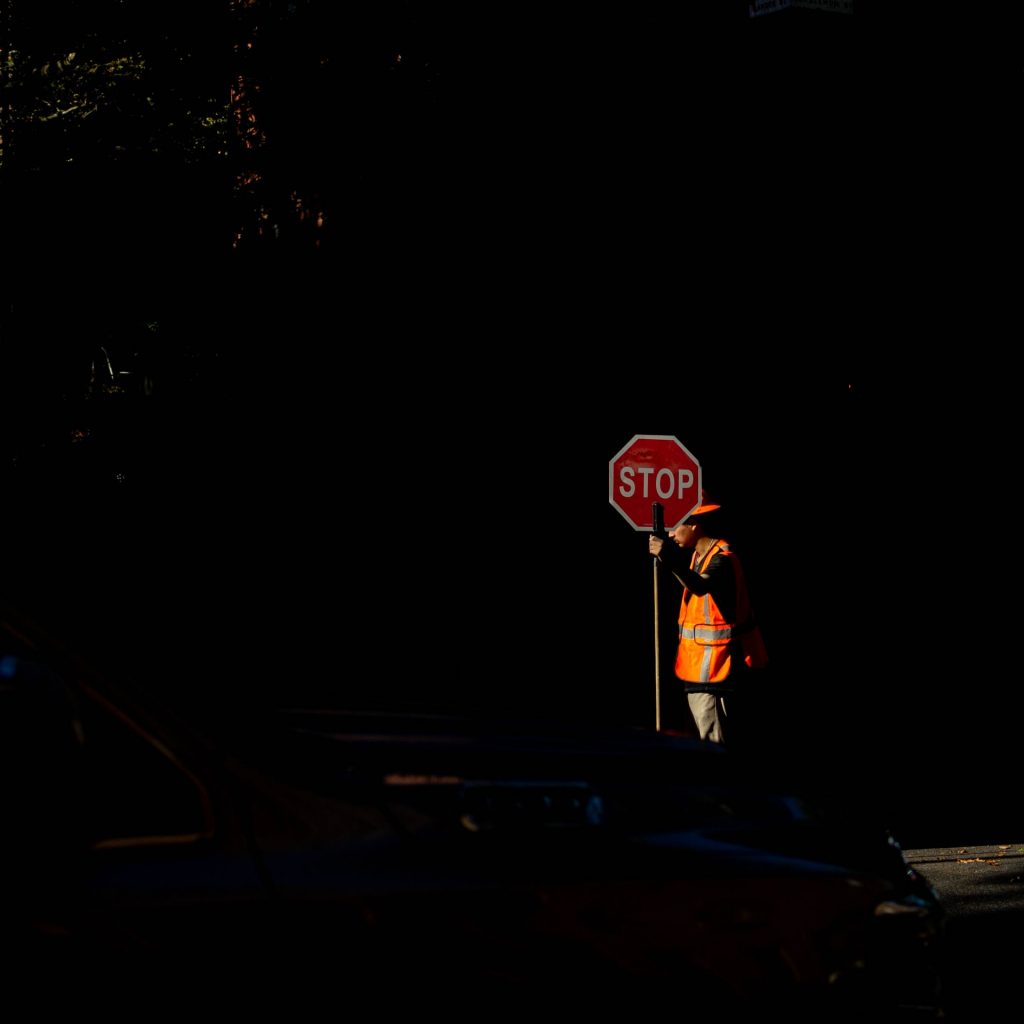Traffic Control – Public Roads 1
Traffic Control – Public Roads 1
Explain dangers
When construction or utility work affects traffic on public roads, there’s a risk both to workers and to ordinary drivers and passengers.
The first priority of a traffic control person (TCP) is to protect workers and the public from accident and injury.
Identify controls
Traffic control persons protect workers and the public by regulating traffic flow. As long as you’re working as a TCP, you can’t do other work or have additional duties.
Public traffic has priority over heavy equipment.
But you’ll have to stop traffic when the job requires it. Otherwise, keep traffic moving at a normal or reduced speed to avoid tie-ups.
With your help, work will go ahead safely and efficiently. I’m going to give you instructions in writing. But let me go over the main points now.
• The most important point is simple: Pay attention.
• Don’t be distracted by talking to anybody. If you have to give directions or instructions to drivers or equipment operators, be clear, simple, and brief.
• Always face oncoming traffic but don’t stand on the travelled portion of the roadway.
• Stay alert to work going on nearby. Don’t get backed over by your own equipment.
• Stand where you can see and be seen by approaching traffic for at least 150 m (500 ft).
• Stand alone. Don’t let a group gather around you.
• Stand at your post. Sitting is hazardous because you can’t fully see or be seen by drivers.
• Adjust where you stand to account for road, weather, and speed conditions. Traffic must have room to react to your direction to stop.
• Always have a quick escape route ready in case a driver doesn’t see you or disregards your signals.
• The Highway Traffic Act requires all drivers to stop or slow down when a TCP displays their sign. However, you are not law enforcement. Report any dangerous motorists to your supervisor and keep a pad and paper with you to jot down licence plate numbers.
• Remember that emergency services (i.e., ambulance, police, and fire vehicles) has priority over all other traffic.
• When two TCPs are working together, you should always be able to see each other in order to coordinate your STOP/SLOW signs.
If you can’t see each other, a third TCP should be assigned to keep you both in view.
• If using a two-way radio to communicate with another TCP, establish clear voice signals for each situation and don’t change them. Avoid unnecessary chit-chat and test the units before your shift.
• Remove or cover any traffic control signs at quitting time or when traffic control is suspended. Drivers can be confused by signs still in place when no work is going on.
NOTE: A traffic control person must never be used to direct traffic for more than one active lane in the same direction, or if the posted speed limit is greater than 90 km/h.
Demonstrate
TCPs must be given oral and written instructions and these instructions must be kept at the project (O. Reg. 213/91, s. 69). Review the written instructions with your TCPs and show them where they are located.
Give TCPs a copy of IHSA’s pocket-sized Handbook for Construction Traffic Control Persons (B016).
Go over the requirements for a typical arrangement for a two-lane roadway (page 10 of the handbook).
For more information, visit the IHSA website.

